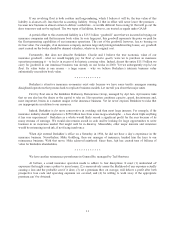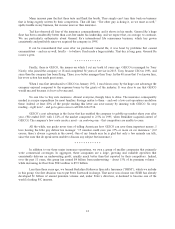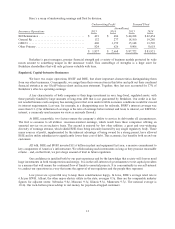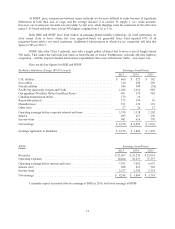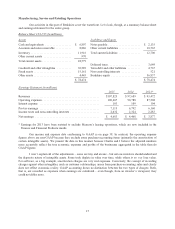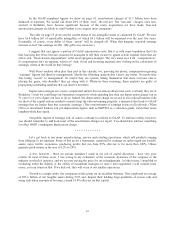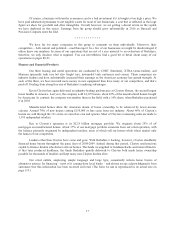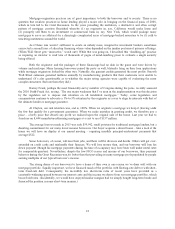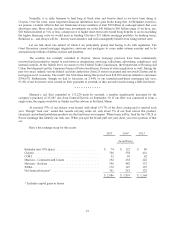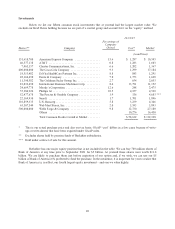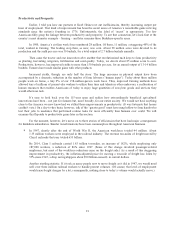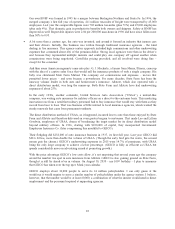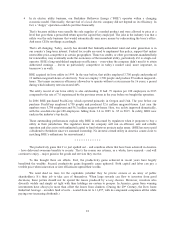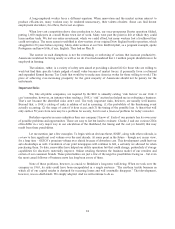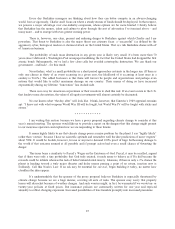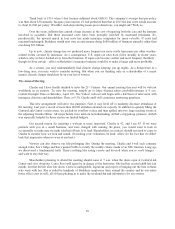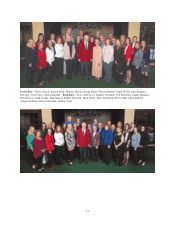Berkshire Hathaway 2015 Annual Report Download - page 23
Download and view the complete annual report
Please find page 23 of the 2015 Berkshire Hathaway annual report below. You can navigate through the pages in the report by either clicking on the pages listed below, or by using the keyword search tool below to find specific information within the annual report.Productivity and Prosperity
Earlier, I told you how our partners at Kraft Heinz root out inefficiencies, thereby increasing output per
hour of employment. That kind of improvement has been the secret sauce of America’s remarkable gains in living
standards since the nation’s founding in 1776. Unfortunately, the label of “secret” is appropriate: Too few
Americans fully grasp the linkage between productivity and prosperity. To see that connection, let’s look first at the
country’s most dramatic example – farming – and later examine three Berkshire-specific areas.
In 1900, America’s civilian work force numbered 28 million. Of these, 11 million, a staggering 40% of the
total, worked in farming. The leading crop then, as now, was corn. About 90 million acres were devoted to its
production and the yield per acre was 30 bushels, for a total output of 2.7 billion bushels annually.
Then came the tractor and one innovation after another that revolutionized such keys to farm productivity
as planting, harvesting, irrigation, fertilization and seed quality. Today, we devote about 85 million acres to corn.
Productivity, however, has improved yields to more than 150 bushels per acre, for an annual output of 13-14 billion
bushels. Farmers have made similar gains with other products.
Increased yields, though, are only half the story: The huge increases in physical output have been
accompanied by a dramatic reduction in the number of farm laborers (“human input”). Today about three million
people work on farms, a tiny 2% of our 158-million-person work force. Thus, improved farming methods have
allowed tens of millions of present-day workers to utilize their time and talents in other endeavors, a reallocation of
human resources that enables Americans of today to enjoy huge quantities of non-farm goods and services they
would otherwise lack.
It’s easy to look back over the 115-year span and realize how extraordinarily beneficial agricultural
innovations have been – not just for farmers but, more broadly, for our entire society. We would not have anything
close to the America we now know had we stifled those improvements in productivity. (It was fortunate that horses
couldn’t vote.) On a day-to-day basis, however, talk of the “greater good” must have rung hollow to farm hands who
lost their jobs to machines that performed routine tasks far more efficiently than humans ever could. We will
examine this flip-side to productivity gains later in this section.
For the moment, however, let’s move on to three stories of efficiencies that have had major consequences
for Berkshire subsidiaries. Similar transformations have been commonplace throughout American business.
‹In 1947, shortly after the end of World War II, the American workforce totaled 44 million. About
1.35 million workers were employed in the railroad industry. The revenue ton-miles of freight moved by
Class I railroads that year totaled 655 billion.
By 2014, Class I railroads carried 1.85 trillion ton-miles, an increase of 182%, while employing only
187,000 workers, a reduction of 86% since 1947. (Some of this change involved passenger-related
employees, but most of the workforce reduction came on the freight side.) As a result of this staggering
improvement in productivity, the inflation-adjusted price for moving a ton-mile of freight has fallen by
55% since 1947, a drop saving shippers about $90 billion annually in current dollars.
Another startling statistic: If it took as many people now to move freight as it did in 1947, we would need
well over three million railroad workers to handle present volumes. (Of course, that level of employment
would raise freight charges by a lot; consequently, nothing close to today’s volume would actually move.)
21


